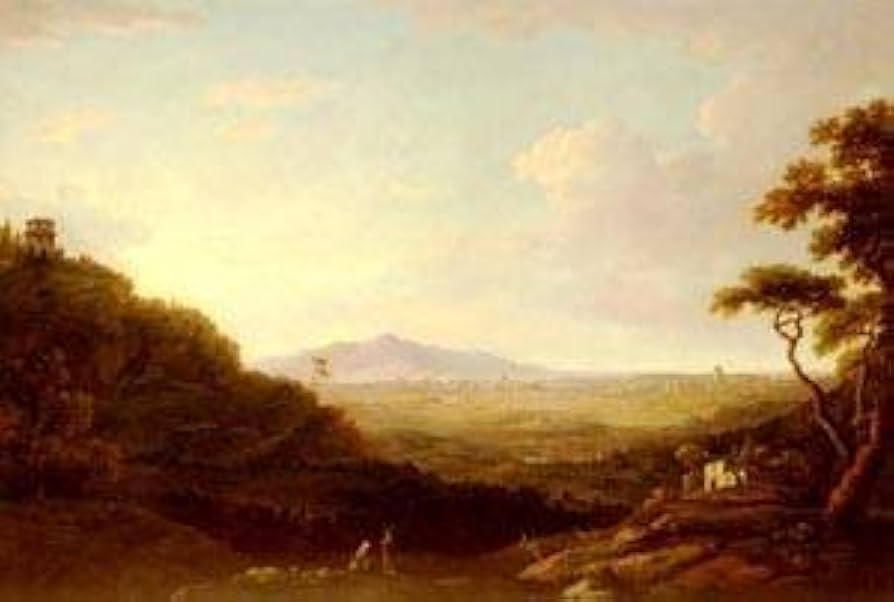Mihály Kovács stands as a significant figure in the Hungarian Romantic movement, a cultural force that resonated deeply with the nation’s desire for political and cultural independence during the 19th century. His works, particularly his self-portraits, encapsulate the spirit of an era that sought to define Hungarian identity through art. Kovács’s contributions to Romanticism are not only a reflection of his personal artistry but also of the broader socio-political environment of his time.
The Hungarian Romantic Movement
Romanticism in Hungary was part of a larger European movement that emerged in the late 18th century, characterized by an emphasis on emotion, nature, and national identity. In Hungary, this movement was intricately tied to the country’s struggles for independence, particularly during the Hungarian Revolution of 1848. Artists like Kovács played a pivotal role in expressing nationalistic sentiments through their work, often blending personal expression with broader cultural themes.
Mihály Kovács: An Artist of His Time
Born in 1818, Mihály Kovács grew up during a period of significant social and political change in Hungary. His early exposure to the arts was shaped by the Romantic ideals that were sweeping across Europe. These ideals emphasized the importance of individualism, the beauty of nature, and the glorification of the past. Kovács’s art was deeply influenced by these themes, which he adapted to fit the Hungarian context.
“Self-Portrait with Kossuth-hat”: A Symbol of National Pride
One of Kovács’s most famous works, the “Self-portrait with Kossuth-hat”, serves as a quintessential example of how the artist merged personal identity with national pride. The Kossuth hat, named after Lajos Kossuth, a leader of the Hungarian Revolution, became a symbol of Hungarian resistance and nationalism. By portraying himself wearing this hat, Kovács not only asserted his support for the revolution but also aligned himself with the broader struggle for Hungarian independence.
This self-portrait goes beyond mere representation; it is a political statement, a reflection of the artist’s alignment with the revolutionary cause. The painting captures the somber yet resolute expression of a man who is deeply connected to the fate of his nation. The use of light and shadow in the piece highlights the duality of hope and despair that characterized the revolutionary period. Kovács’s meticulous attention to detail, from the texture of the hat to the folds of his clothing, adds to the painting’s emotional depth, making it a powerful symbol of the era.
Kovács’s Other Notable Works
While the “Self-portrait with Kossuth-hat” remains one of Kovács’s most celebrated pieces, his body of work includes numerous other paintings that contribute to Hungarian Romanticism. His portraits of Hungarian historical figures, for example, are notable for their emotional intensity and patriotic fervor. These works often depict their subjects with a sense of grandeur and heroism, aligning with the Romantic ideal of celebrating national history.
Kovács also explored themes of nature and rural life in his paintings, which were common in Romantic art. His landscapes often feature dramatic contrasts between light and dark, capturing the sublime beauty of the Hungarian countryside. These works reflect a deep appreciation for the natural world, another hallmark of Romanticism, while also emphasizing the connection between the land and the national spirit.
Impact on Hungarian Art
Mihály Kovács’s contribution to Hungarian art cannot be overstated. His work not only helped define the Romantic movement in Hungary but also played a crucial role in shaping the country’s national identity. By intertwining personal expression with nationalistic themes, Kovács created art that resonated with the Hungarian people and inspired future generations of artists.
His influence extended beyond his own time, as his approach to blending art with national identity became a model for later Hungarian artists. The emotional depth and patriotic fervor in Kovács’s work set a standard for how art could be used to express and reinforce cultural values. His paintings became symbols of national pride, and his legacy lives on in the continued appreciation of Hungarian Romanticism.
Conclusion
Mihály Kovács was more than just a painter; he was a pioneer of Hungarian Romanticism who used his art to express the spirit of his nation. His self-portraits, particularly the “Self-portrait with Kossuth-hat”, are powerful symbols of Hungarian identity and resilience. Through his work, Kovács not only contributed to the Romantic movement but also helped to shape a cultural identity that continues to be celebrated in Hungary today. His legacy as a pioneer of Hungarian Romanticism endures, reminding us of the power of art to reflect and shape the soul of a nation.





